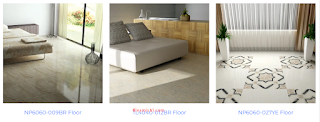Dining Room Windows: Enhancing Aesthetics and Functionality
### Introduction
Dining room windows play a crucial role in shaping the ambiance, functionality, and aesthetics of a home. They contribute to natural lighting, ventilation, and the overall décor. Selecting the right windows can enhance the dining experience by creating an inviting and well-lit atmosphere. In this article, we will explore the various aspects of dining room windows, including styles, materials, energy efficiency, and design considerations.
### Importance of Dining Room Windows
Dining rooms are spaces where families gather, meals are shared, and social interactions take place. The right window choice can significantly impact the comfort and appeal of this space. Well-placed windows can provide beautiful views, increase daylight penetration, and improve air circulation, making the dining area more pleasant and functional.
 |
| Dining Room Windows |
### Types of Dining Room Windows
There are several window styles suitable for dining rooms, each offering unique benefits.
#### 1. Bay and Bow Windows
Bay and bow windows extend outward from the wall, creating a sense of spaciousness and allowing ample natural light. They offer a panoramic view, making them ideal for dining rooms with scenic outdoor landscapes. These windows can also provide additional seating or a decorative display area.
#### 2. Picture Windows
Picture windows are large, fixed windows that offer unobstructed views and maximum daylight. They are perfect for dining rooms where ventilation is not a primary concern. These windows can be paired with operable side windows for improved airflow.
#### 3. Casement Windows
Casement windows are hinged on one side and open outward, allowing excellent ventilation and light control. Their simple yet functional design suits modern and traditional dining spaces.
#### 4. Double-Hung Windows
Double-hung windows feature two operable sashes that slide vertically. They provide versatile ventilation options and are easy to clean, making them a practical choice for dining rooms.
#### 5. Sliding Windows
Sliding windows operate horizontally along a track, offering a sleek and contemporary look. They are ideal for dining rooms where space is limited, as they do not require clearance to open.
#### 6. French Windows
French windows consist of two panels that open outward or inward, creating a classic and elegant appeal. They are often paired with French doors to enhance the overall aesthetic of the dining area.
### Materials for Dining Room Windows
The choice of window material affects durability, energy efficiency, and maintenance. Common materials include:
#### 1. Wood
Wooden windows offer a timeless and elegant look. They provide excellent insulation but require regular maintenance to prevent warping and rot.
#### 2. Vinyl
Vinyl windows are affordable, low-maintenance, and energy-efficient. They come in various colors and finishes to complement different dining room designs.
#### 3. Aluminum
Aluminum windows are durable and lightweight, making them suitable for modern and industrial-style dining rooms. However, they are less energy-efficient compared to other materials.
#### 4. Fiberglass
Fiberglass windows combine strength, energy efficiency, and low maintenance. They can mimic the appearance of wood while offering superior durability.
#### 5. Composite
Composite windows blend different materials, such as wood and plastic, to provide a balance of aesthetics and performance.
### Energy Efficiency Considerations
Energy-efficient windows contribute to comfort and cost savings by reducing heat loss and minimizing energy consumption. Key features to consider include:
- **Low-E Glass:** Reflects heat and UV rays while allowing natural light.
- **Double or Triple Glazing:** Provides better insulation and noise reduction.
- **Gas Fills:** Argon or krypton gas between panes enhances insulation.
- **Weatherstripping:** Prevents air leaks and improves energy efficiency.
### Window Treatments for Dining Rooms
Window treatments enhance privacy, light control, and aesthetics. Popular options include:
#### 1. Curtains and Drapes
Curtains and drapes add elegance and softness to dining rooms. They come in various fabrics, colors, and patterns to match the décor.
#### 2. Blinds
Blinds offer adjustable light control and privacy. Options include vertical, horizontal, and Roman blinds.
#### 3. Shades
Shades, such as roller or cellular shades, provide a sleek and modern look while enhancing energy efficiency.
#### 4. Shutters
Shutters add a classic touch and offer superior light control and insulation.
### Design Considerations
When selecting dining room windows, consider the following design aspects:
- **Size and Placement:** Ensure windows provide adequate natural light without compromising privacy.
- **Architectural Style:** Choose windows that complement the home's design.
- **Outdoor Views:** Optimize window placement to capture scenic landscapes.
- **Integration with Furniture:** Align window design with dining room furniture layout for harmony.
### Conclusion
Dining room windows are an essential element of home design, impacting aesthetics, comfort, and functionality. By selecting the right window style, material, and treatments, homeowners can create a dining space that is both inviting and efficient. Investing in high-quality, energy-efficient windows enhances the overall dining experience while adding value to the home.








